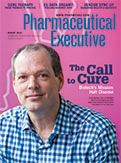Gene Therapy: Managing the Clinical Trial Minefields
Pharmaceutical Executive
Advice for developers in steering gene therapies from concept to trials to hopeful approval in what is an uniquely complex path.
The field of gene medicine has a history filled with hope and tragedy, successes, and cautionary tales. The world’s first gene therapy was approved in Europe in 2012, only to be taken off the market five years later due to regulatory and commercial barriers. Now, almost seven years after the first approval, gene therapy clinical development is thriving. And the path to patients in R&D settings, and ultimately to market, continues to evolve as new milestones are met and newcomers abound.
This is good news for those with rare diseases and unmet medical needs, but for these new options, the trajectory from concept to trials to approval and commercial availability is a uniquely complex, but not impossible, pathway.
New therapeutic reality
“Once just a theory, gene therapies are now a therapeutic reality for some patients,” Dr. Scott Gottlieb, the former FDA commissioner, wrote in July 2018 when announcing steps the agency was taking to support development of new drugs.
Gottlieb, at the time, pointed to the approvals of Kymriah, Yescarta, and Luxturna. And since then, there’s been additional approvals, an encouraging sign considering the scarcity of gene therapy drugs and the enormous effort and expense involved in conducting human trials. Still, Gottlieb cautioned, there is much we don’t understand about how these products work, how to administer them safely, and whether they will continue to work properly without causing adverse side effects in the long term. Accordingly, the then-commissioner issued six scientific guidances intended as the basis of “a modern, comprehensive framework” for advancing the field of gene therapy while ensuring that new products meet the agency’s standards for safety and efficacy.
Three of the documents focus on disease areas where gene therapy is seen as having especially strong potential: hemophilia, retinal disorders, and rare diseases. The other three are updates to existing FDA guidance on manufacturing issues; targeting these compounds’ safety, quality, potency, and purity; testing of retroviral vector-based gene therapy products; and the design of long-term follow-up observation of patients.
What is emerging here, on the part of the entire drug development community, is a shift in emphasis. After a slow start, gene therapy has moved beyond the theoretical realm, and it’s widely accepted that many new treatments in this space will appear on the market in the relatively near future.
Advice for sponsors
So how do we proceed? The answer is carefully, with a lot of deliberation and planning and proper stakeholder engagement. Here are some things sponsors should consider.
Early and open dialogue with the regulators is imperative. These discussions should include the development plan, endpoints (including the potential use of any biomarkers and/or disease-specific clinical outcome assessments), study design (including the use of placebo or an acceptable control, where appropriate), the number of studies under consideration, patient numbers, and plans for long-term follow up.
Procurement of orphan-drug designation and/or approval for one or more of the agencies’ expedited programs (e.g., breakthrough therapy or RMAT with the FDA or PRIME designation with the EMA) will facilitate this access and collaboration.
Upfront planning and compliance with the agencies’ instruction for determining and validating new endpoints should be incorporated in the development plan. Of note, the FDA released in December draft guidance for industry titled Biomarker Qualification: Evidentiary Framework.
With respect to endpoints, it’s important that they are as meaningful to patients individually as they are significant clinically. Therefore, early engagement with the patient community to obtain the patient/family perspective on the disease, identify relevant endpoints, ensure feasibility of clinical trials and specific study designs, and incorporate patient experience data should be prioritized.
Advanced therapy medicines are notoriously expensive, and payers are very concerned with managing the potential financial risk and impact of gene therapies. Consequently, a combination of existing and new approaches to reimbursement will need to be considered. Sponsors need to understand, as early as possible, what data and value claim payers will need, and they must focus on generating a value statement and health economics story early-and, where needed, build a collection of this data into the clinical plan.
Angi Robinson is the Vice President of Rare Diseases & Pediatrics at Premier Research.

FDA Grants Priority Review to Regeneron’s Eylea for Macular Edema Following Retinal Vein Occlusion
April 18th 2025Regulatory action was based on data from the Phase III QUASAR trial, which demonstrated that Eylea HD dosed every eight weeks achieved non-inferior visual acuity outcomes compared to Eylea in patients with macular edema following retinal vein occlusion.
Addressing Disparities in Psoriasis Trials: Takeda's Strategies for Inclusivity in Clinical Research
April 14th 2025LaShell Robinson, Head of Global Feasibility and Trial Equity at Takeda, speaks about the company's strategies to engage patients in underrepresented populations in its phase III psoriasis trials.
New Insights Into T Cell Exhaustion and Inflammation in Long COVID
April 17th 2025Nigel McCracken, chief operating officer, Virax Biolabs, discusses new findings that reveal altered cytokine activity and evidence of T cell exhaustion in long COVID patients, providing deeper insight into post-infection immune disruption.